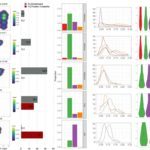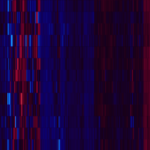Lien vers Pubmed [PMID] – 34107844
Lien DOI – 10.1080/21505594.2021.1929749
Virulence . 2021 Dec;12(1):1438-1451
Mycobacterium ulcerans is the causal agent of Buruli ulcer, a chronic infectious disease and the third most common mycobacterial disease worldwide. Without early treatment, M. ulcerans provokes massive skin ulcers, caused by the mycolactone toxin, its main virulence factor. However, spontaneous healing may occur in Buruli ulcer patients several months or years after the disease onset. We have shown, in an original mouse model, that bacterial load remains high and viable in spontaneously healed tissues, with a switch of M. ulcerans to low levels of mycolactone production, adapting its strategy to survive in such a hostile environment. This original model offers the possibility to investigate the regulation of mycolactone production, by using an RNA-seq strategy to study bacterial adaptation during mouse infection. Pathway analysis and characterization of the tissue environment showed that the bacillus adapted to its new environment by modifying its metabolic activity and switching nutrient sources. Thus, M. ulcerans ensures its survival in healing tissues by reducing its secondary metabolism, leading to an inhibition of mycolactone synthesis. These findings shed new light on mycolactone regulation and pave the way for new therapeutic strategies.





